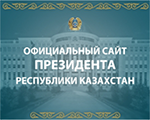Frequently Asked Questions
1. What is the penalty for acts of vandalism?
Answer:
Article 294 of the Criminal Code of the Republic of Kazakhstan provides for criminal liability for vandalism "Vandalism, that is, desecration of buildings, other structures, historical and cultural monuments, natural objects protected by the state, inscriptions or drawings, or other actions insulting public morality, as well as intentional damage to property on transport or in other public places – shall be punished by a fine in the amount of up to one hundred and sixty monthly calculation indices or correctional labor in the same amount, or community service for up to one hundred and sixty hours, or arrest for up to forty days."
Article 448 of the Code of Administrative Offences in the Republic of Kazakhstan provides for the responsibility of minors for committing acts that fall under the signs of the offense of vandalism "Vandalism, that is, desecration of buildings, other structures, historical and cultural monuments, natural objects protected by the state, places of burial of people with inscriptions or drawings, or other actions insulting public morality, and equally intentional damage to property on transport or in other public places committed by minors under the age of sixteen, -
- entail a fine on parents or persons replacing them in the amount of fifteen monthly calculation indices.
2. What law regulates the installation of historical and cultural monuments?
Answer:
The installation of monumental art objects in the Akmola region is regulated by the norms of the Law of the Republic of Kazakhstan "On the Protection and Use of Historical and Cultural Heritage Objects", dated December 26, 2019 No. 288-VI ZRK, by Order of the Minister of Culture and Sports of the Republic of Kazakhstan dated April 28, 2020 No. 103 "On approval of the Rules for the Establishment of monumental Art structures".
3. Where can I ask for advice on the installation of historical and cultural monuments?
Answer:
To the "Center for the Protection and Use of historical and Cultural heritage" of the Department of Culture of the Akmola region (Kokshetau, 23 Baymukanova str., vol.51-27-75; 51-27-99)
4. What is the procedure for the installation of monumental art structures?
Answer:
The installation of monumental art structures is regulated by the norms of the Law of the Republic of Kazakhstan "On the Protection and Use of Objects of Historical and Cultural Heritage", dated December 26, 2019 No. 288-VI ZRK, as well as by Order of the Minister of Culture and Sports of the Republic of Kazakhstan dated April 28, 2020 No. 103 "On Approval of the Rules for the Establishment of Monumental Art structures"
In accordance with subparagraph 9) of Article 11 of the Law of the Republic of Kazakhstan "On the Protection and Use of objects of historical and Cultural Heritage", local executive bodies of regions, cities of republican significance, the capital (hereinafter referred to as local executive bodies) carry out work on the installation of monumental art structures.
To establish monumental art structures (hereinafter referred to as the structure), local executive bodies send proposals on the establishment of a structure to the authorized body for the protection and use of historical and cultural heritage objects (hereinafter referred to as the authorized body) with documents confirming the merit of an outstanding personality and (or) the significance of a historical event.
The merit of an outstanding personality and (or) the significance of a historical event are confirmed by copies of archival documents, extracts from documentary, historical, reference encyclopedias, books, scientific articles and other documents.
Proposals for the installation of structures are considered no earlier than five years after the death of an outstanding personality, except in cases of heroism and bravery, making a special significant contribution to strengthening the independence of the state and (or) committing a significant historical event.
To consider the proposals of local executive bodies, the authorized body creates a Commission for the establishment of monumental art structures (hereinafter referred to as the Commission). The Commission consists of the Chairman, the Vice-Chairman, the members of the Commission and the Secretary. The Secretary is not a member of the Commission. During the absence of the Chairman, his functions are performed by a deputy.
Meetings of the Commission are held at least once every three months. The Commission's decisions are taken by open vote and are considered adopted if the majority of the total number of Commission members voted. In case of equality of votes, the decision for which the chairman voted is considered adopted.
The Commission's decision is formalized in a protocol and sent to local executive bodies within five working days from the date of its signing.
In case of approval by the Commission of proposals for the establishment of a structure, local executive bodies send the following documents to the authorized body:
1) a cover letter containing information on the financing of the installation of the facility;
2) a copy of the decision or resolution of local executive bodies on the allotment of a land plot for the establishment of a structure;
3) at least two working construction projects on a scale of at least 1:10;
4) situational layout of the structure indicating the four directions of light;
5) layout of the general plan of the building on a scale of 1:500;
6) an explanatory note containing a brief description of the architectural, artistic, and compositional solution of the structure.
The working design of the building is considered for high-quality creative execution, revealing portrait similarities and reflecting a historical event. Taking into account the presented situational scheme and layout of the general plan of the structure, the correct location of the structure is determined.
Based on the results of the meeting, the Commission makes one of the following decisions:1) approve the working draft of the building;
2) finalize the working draft of the structure.
5. Where can I ask for advice on installing plaques?
Answer:
To the "Center for the Protection and Use of historical and Cultural heritage" of the Department of Culture of the Akmola region (Kokshetau, 23 Baymukanova str., vol.51-27-75; 51-27-99)
6.What is the protected area of the monument and how is it defined?
Answer:
In accordance with the Rules for determining the protected zone, the zone of regulation of development and the zone of protected natural landscape of a historical and cultural monument and the regime of their use, approved by Order of the Minister of Culture and Sports of the Republic of Kazakhstan No. 86 dated April 14, 2020, the boundaries of the protected zone of monuments are defined.
Paragraph 7 of the above Rules: The boundaries of the protected zone of historical and cultural monuments are determined by the following parameters:
1) the monument of urban planning and architecture, the construction of monumental art, sacred objects up to 40 (forty) meters high are surrounded by a protective zone equal to two values of the distance from the earth to its highest point;
2) the monument of urban planning and architecture, the construction of monumental art, sacred objects with a height of 40 (forty) meters are surrounded by a protective zone equal to one magnitude of the distance from the earth to its highest point;
3) an archaeological monument, sacred objects are surrounded by a security zone of 40 (forty) meters from the extreme boundaries of the detection of cultural layers of a historical and cultural monument, with a group of monuments - from the outer extreme boundaries of historical and cultural monuments, 40 (forty) meters of a zone of regulated development and 40 (forty) meters of a zone of protected natural landscape of historical and cultural monuments are included. culture, in total – 120 (one hundred and twenty) meters.;
4) ensembles and complexes, sacred objects are surrounded by a security zone of 20 (twenty) meters from the borders of the extreme object of the monument of history and culture.
7. Which organization provides information to the land user about the possible historical and cultural heritage monuments available in his developed territory?
Answer:
"Center for the Protection and use of historical and cultural heritage" of the Department of Culture of the Akmola region (Kokshetau, 23 Baymukanova str., vol.51-27-75; 51-27-99)
According to paragraph 1 of Article 30 of the Law of the Republic of Kazakhstan "On the Protection and use of objects of historical and cultural heritage", "During the development of the territory before the allotment of land, archaeological work must be carried out to identify objects of historical and cultural heritage in accordance with the legislation of the Republic of Kazakhstan. In case of discovery of objects of historical and cultural heritage having historical, scientific, artistic and other cultural value, individuals and legal entities are obliged to suspend further work and inform the authorized body and local executive bodies of the Akmola region within 3 (three) working days.
8. What is the procedure for installing a plaque?
Answer:
A plaque is a slab made of marble, granite, metal or other materials containing information about an outstanding person or a significant event, installed on the facades of buildings and structures.
Chapter 2 of the Rules for the Establishment of Memorial Plaques developed in accordance with subparagraph 21) of Article 10 of the Law of the Republic of Kazakhstan dated December 26, 2019 "On the Protection and Use of objects of Historical and Cultural Heritage" and approved by Order No. 77 of the Minister of Culture and Sports of the Republic of Kazakhstan dated April 02, 2020, defines the procedure for the establishment of memorial plaques.
1. Memorial plaques are installed on the basis of permits issued by local executive bodies of regions, cities of republican significance, and the capital.
2. Memorial plaques are installed on the facades of buildings and structures where he lived and worked(a) or there was an outstanding person, a significant event was taking place.
3. Memorial plaques are installed upon confirmation of the fact of residence, work, the presence of an outstanding personality and a significant event that has occurred in a building or structure.
4. Memorial plaques are made in sizes not exceeding 50-80 centimeters and are installed at a height of at least two meters.
5. The text of the plaque contains information about an outstanding personality (surname, first name, patronymic (if any), period of life, field of activity, merits) and (or) information about a significant event (date, place, description), as well as, if necessary, portrait images of an outstanding personality or images of a significant event and decorative elements.
Дата создания: 07.12.2023 14:45
Дата обновления: 07.12.2023 14:48










